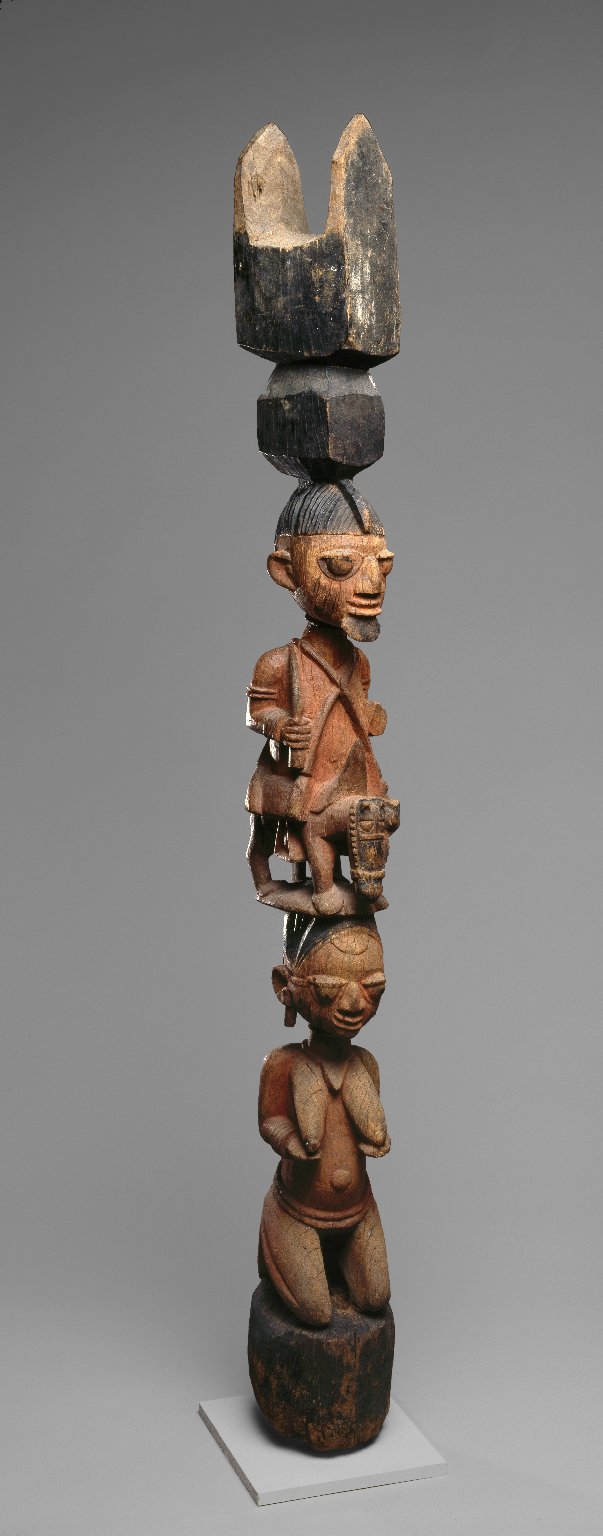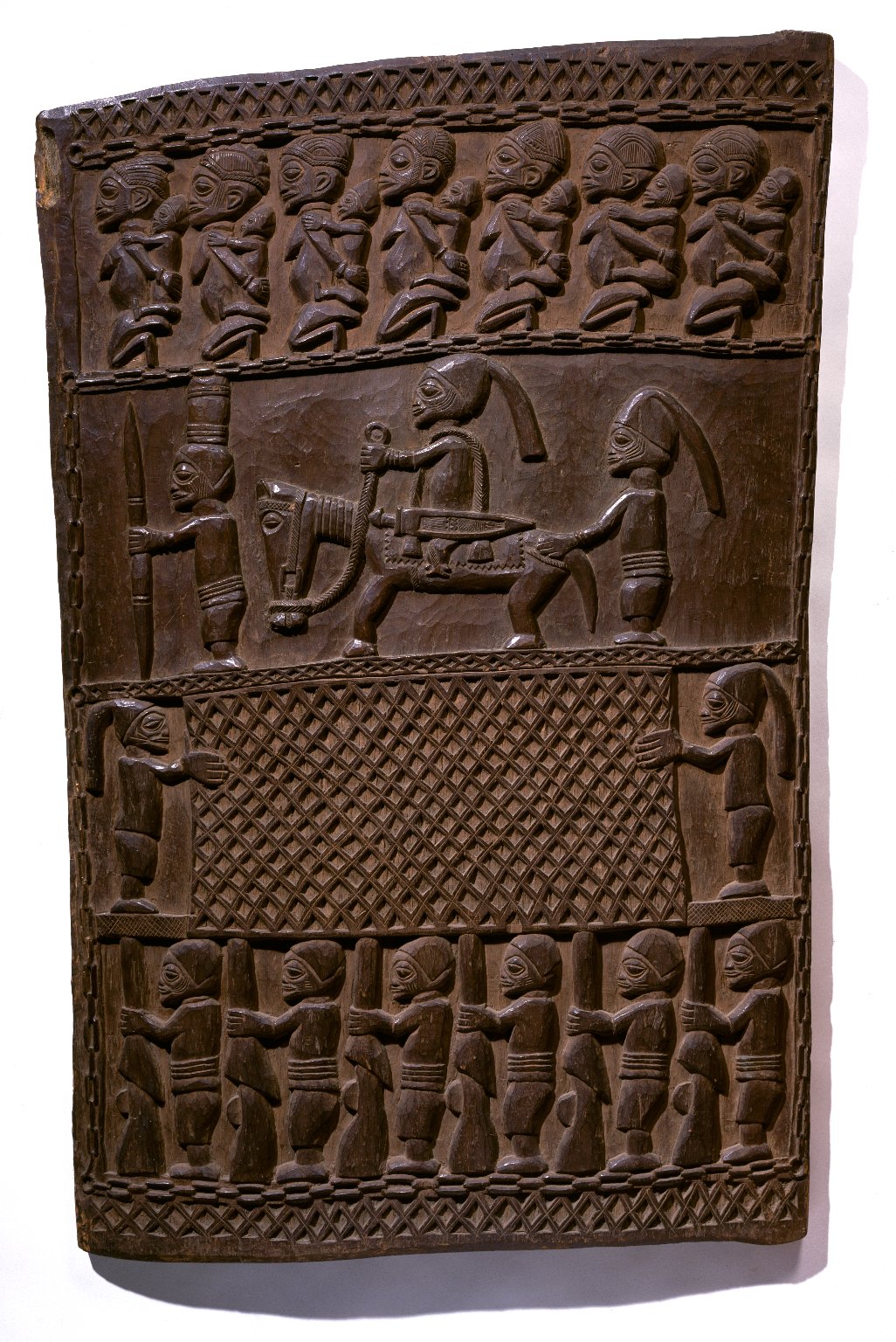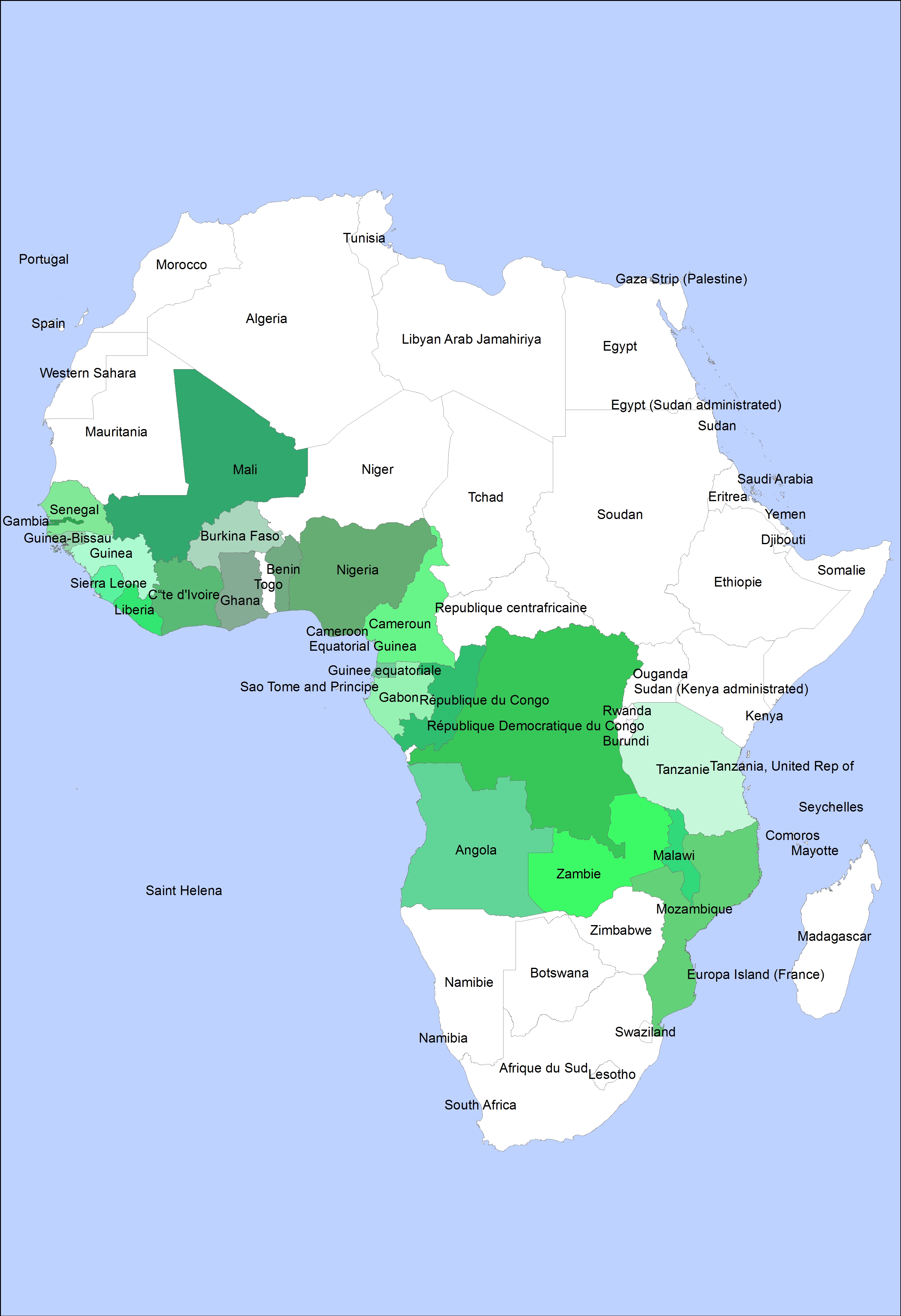|
Aṣẹ
Ase or ashe (from Yoruba ''àṣẹ'') is a philosophical concept defined by the Yoruba of Nigeria to represent the power that makes things happen and produces change in the Yoruba religion. It is believed to be given by Olodumare to everything — gods, ancestors, spirits, humans, animals, plants, rocks, rivers, and voiced words such as songs, prayers, praises, curses, or even everyday conversation. Existence, according to Yoruba thought, is dependent upon it. In addition to its sacred characteristics, ''ase'' also has important social ramifications, reflected in its translation as "power, authority, command." A person who, through training, experience, and initiation, learns how to use the essential life force of things to willfully effect change is called an . Rituals to invoke divine forces reflect this same concern for the autonomous ''ase'' of particular entities. The recognition of the uniqueness and autonomy of the ''ase'' of persons and gods is what structures society ... [...More Info...] [...Related Items...] OR: [Wikipedia] [Google] [Baidu] |
Opon Ifá
An ọpọ́n Ifá is a divination tray used in traditional African and Afro-American religions, notably in the system known as Ifá and in Yoruba tradition more broadly. The etymology of ''opon'', literally meaning "to flatter", explains the artistic and embellished nature of the trays, as they are meant to praise and acknowledge the noble work of the Babalawo (diviners). The etymology of the term ''Ifá,'' however'','' has been a subject of debate. Ifá may be considered an ''orisha,'' or a Yoruba god — specifically, the god of divination '' Orula''. Conversely, some scholars have referred to Ifá merely as the "great consulting oracle" as opposed to a god or a deity, without any divine connotations. Opon Ifá are typically made by wood carvers who specialize in the trays, and are made with designs per request of the patron babalawo or by the carver's own accord. The emphasis on the tray's design is not only due to their "flattering" nature, but also because of their fu ... [...More Info...] [...Related Items...] OR: [Wikipedia] [Google] [Baidu] |
African Philosophy
African philosophy is the philosophical discourse produced in Africa or by indigenous Africans. The term Africana philosophy covers the philosophy made by African descendants, including African Americans. African philosophers are found in the various academic fields of present philosophy, such as metaphysics, epistemology, moral philosophy, and political philosophy. One particular subject that several modern African philosophers have written about is that on the subject of freedom and what it means to be free or to experience wholeness. Philosophy in Africa has a rich and varied history, some of which has been lost over time. Some of the world's oldest philosophical texts have been produced in Ancient Egypt (Kemet), written in Hieratic and on papyrus, from ca. 2200 to 1000 BCE, one of the earliest known African philosophers was Ptahhotep, an ancient Egyptian philosopher. In general, the ancient Greeks acknowledged the Egyptian forebearers, and in the fifth century BCE, the philos ... [...More Info...] [...Related Items...] OR: [Wikipedia] [Google] [Baidu] |
Yoruba People
The Yoruba people (, , ) are a West African ethnic group that mainly inhabit parts of Nigeria, Benin, and Togo. The areas of these countries primarily inhabited by Yoruba are often collectively referred to as Yorubaland. The Yoruba constitute more than 42 million people in Africa, are a few hundred thousand outside the continent, and bear further representation among members of the African diaspora. The vast majority of the Yoruba population is today within the country of Nigeria, where they make up 21% of the country's population according to CIA estimations, making them one of the largest ethnic groups in Africa. Most Yoruba people speak the Yoruba language, which is the Niger-Congo language with the largest number of native or L1 speakers. In Africa, the Yoruba are contiguous with the Yoruboid Itsekiri to the south-east in the northwest Niger Delta, Bariba to the northwest in Benin and Nigeria, the Nupe to the north, and the Ebira to the northeast in central Nigeria ... [...More Info...] [...Related Items...] OR: [Wikipedia] [Google] [Baidu] |
Ori (Yoruba)
Ori (known as Orí in Latin America) is a Yoruba metaphysical concept. Ori, literally meaning "head," refers to one's spiritual intuition and destiny. It is the reflective spark of human consciousness embedded into the human essence, and therefore is often personified as an Orisha in its own right. It is believed by the Yoruba religion that human beings are able to heal themselves both spiritually and physically by working with the Orishas to achieve a balanced character Character or Characters may refer to: Arts, entertainment, and media Literature * ''Character'' (novel), a 1936 Dutch novel by Ferdinand Bordewijk * ''Characters'' (Theophrastus), a classical Greek set of character sketches attributed to The ..., or ''iwa-pele''. When one has a balanced character, one obtains an alignment with one's Ori or ''divine self''. It is also believed that Ori be worshiped like Orisha. When things are not going right, Ori should be consulted. And to make things right Ori should be a ... [...More Info...] [...Related Items...] OR: [Wikipedia] [Google] [Baidu] |
Yoruba Culture
Distinctive cultural norms prevail in Yorubaland and among the Yoruba people.Kola Abimbola, Yoruba Culture: ''A Philosophical Account'', Iroko Academic Publishers, 2005. Art Sculpture The Yoruba are said to be prolific sculptors, famous for their terra cotta works throughout the 12th, 13th and 14th centuries; artists have also shown the capacity to make artwork out of bronze. Esiẹ Museum is a museum in Esiẹ ;a neighbouring town to Oro in Irepodun, Kwara. The museum was the first to be established in Nigeria when it opened in 1945. It once housed over a thousand tombstone figures or images representing human beings. It is reputed to have the largest collection of soapstone images in the world. In modern times, the Esie museum has been the center of religious activities and host a festival in the month of April every year. Textile Weaving is done on different types of looms in order to create hundreds of different patterns. Adire and Aso Oke are some of the popular t ... [...More Info...] [...Related Items...] OR: [Wikipedia] [Google] [Baidu] |
Energy (esotericism)
Proponents and practitioners of various esoteric forms of spirituality and alternative medicine refer to a variety of claimed experiences and phenomena as being due to "energy" or "force" that defy measurement and thus are distinguished from the scientific form of energy. Claims related to energy therapies are most often anecdotal, rather than being based on repeatable empirical evidence. There is no scientific evidence for the existence of such energy, and physics educators criticize the use of the term "energy" to describe the ideas as potentially confusing. History Concepts such as "life force", "'' qi''" and "'' élan vital''" existed from antiquity. In the 18th century, Franz Mesmer ignited debate with his theory of animal magnetism. Attention to vitalism grew in the 18th and 19th centuries. Interest continued into the 20th century, largely fuelled by adherents of the New Age movement. As biologists studied embryology and developmental biology, particularly before th ... [...More Info...] [...Related Items...] OR: [Wikipedia] [Google] [Baidu] |
Afrocentrism
Afrocentrism is an approach to the study of world history that focuses on the history of people of recent African descent. It is in some respects a response to Eurocentric attitudes about African people and their historical contributions. It seeks to counter what it sees as mistakes and ideas perpetuated by the racist philosophical underpinnings of Western academic disciplines as they developed during and since Europe's Early Renaissance as justifying rationales for the enslavement of other peoples, in order to enable more accurate accounts of not only African but all people's contributions to world history. Afrocentricity deals primarily with self-determination and African agency and is a Pan-African point of view for the study of culture, philosophy, and history. Gates, Henry Louis, and Kwame Anthony Appiah (eds), '' Africana: The Encyclopedia of the African and African-American'' Volume 1, p. 111, Oxford University Press. 2005. Afrocentrism is a scholarly movement th ... [...More Info...] [...Related Items...] OR: [Wikipedia] [Google] [Baidu] |
Orisha
Orishas (singular: orisha) are spirits that play a key role in the Yoruba religion of West Africa and several religions of the African diaspora that derive from it, such as Cuban, Dominican and Puerto Rican Santería and Brazilian Candomblé. The preferred spelling varies depending on the language in question: òrìṣà is the spelling in the Yoruba language, orixá in Portuguese, and orisha, oricha, orichá or orixá in Hispanophone, Spanish-speaking countries. According to the teachings of these religions, the orishas are spirits sent by the supreme creator, Olodumare, to assist humanity and to teach them to be successful on ''Ayé'' (Earth). Rooted in the Yoruba religion, native religion of the Yoruba people, most orishas are said to have previously existed in òrún - the spirit world - and then became Irúnmọlẹ̀ - spirits or divine beings incarnated as human on Earth. Irunmole took upon a human identity and lived as ordinary humans in the physical world, but because ... [...More Info...] [...Related Items...] OR: [Wikipedia] [Google] [Baidu] |
Yoruba Art
The Yoruba of West Africa (Benin, Nigeria and Togo, with migrant communities in parts of Ghana and Sierra Leone) are responsible for one of the finest African art, artistic traditions in Africa, a tradition that remains vital and influential today. Much of the art of the Yoruba, including staffs, court dress, and beadwork for crowns, is associated with the royal courts. The courts also commissioned numerous architectural objects such as veranda posts, gates, and doors that are embellished with carvings. Other Yoruba art is related shrines and masking traditions. The Yoruba worship a large pantheon of deities, and shrines dedicated to these gods are adorned with carvings and house an array of altar figures and other ritual paraphernalia. Masking traditions vary regionally, and a wide range of mask types are employed in various festivals and celebrations. History In the period around 1300 CE the artists at Ife developed a refined and naturalistic sculptural tradition in terrac ... [...More Info...] [...Related Items...] OR: [Wikipedia] [Google] [Baidu] |
Brooklyn Museum 82
Brooklyn () is a borough of New York City, coextensive with Kings County, in the U.S. state of New York. Kings County is the most populous county in the State of New York, and the second-most densely populated county in the United States, behind New York County (Manhattan). Brooklyn is also New York City's most populous borough,2010 Gazetteer for New York State . Retrieved September 18, 2016. with 2,736,074 residents in 2020. Named after the Dutch village of |
Traditional African Masks
Traditional African masks play an important role in certain traditional African rituals and ceremonies. Masks serve an important role in rituals or ceremonies with varied purposes like ensuring a good harvest, addressing tribal needs in times of peace or war, or conveying spiritual presences in initiation rituals or burial ceremonies. Some masks represent the spirits of deceased ancestors. Others symbolize totem animals, creatures important to a certain family or group. In some cultures, like the kuba culture of the Democratic Republic of the Congo, masks represent specific figures in tribal mythology, like a king or a rival to the ruler. The wearer of the mask is often believed to be able to communicate to the being symbolized by it, or to be possessed by who or what the mask represents. Ritual and ceremonial masks are an essential feature of the traditional culture of the peoples of a part of Sub-Saharan Africa, e.g. roughly between the Sahara and the Kalahari Desert. Whi ... [...More Info...] [...Related Items...] OR: [Wikipedia] [Google] [Baidu] |






